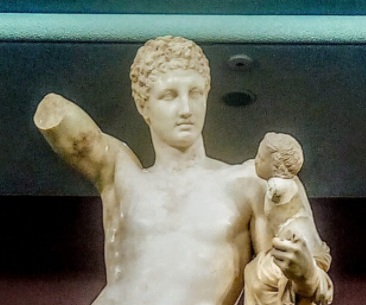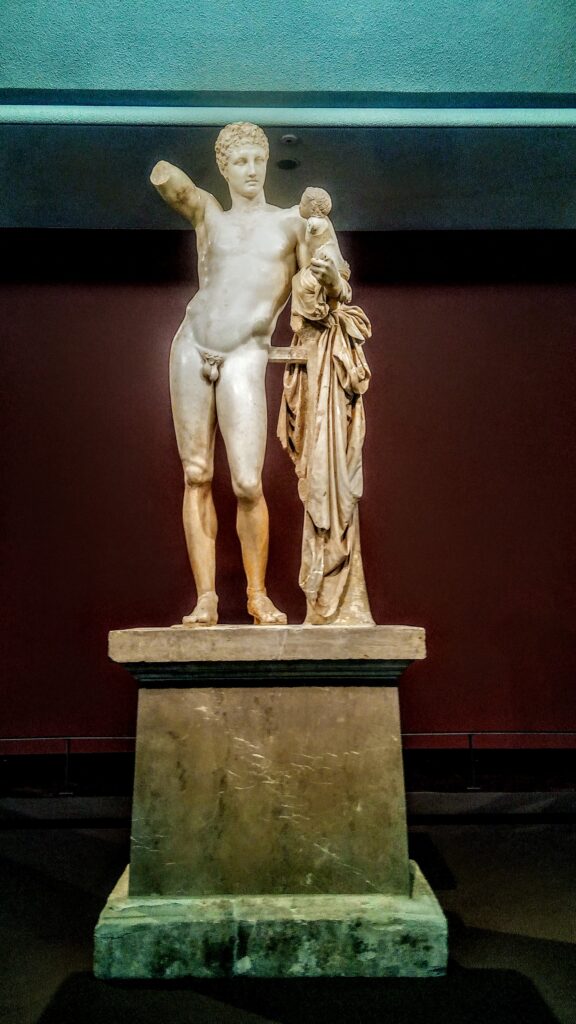
Hermes of Praxiteles
Description of the sculpture
To begin with, Ermes of Praxiteles is an Ancient Greek sculpture of god Hermes and infant Dionysus. Displayed at the Archaeological Museum of Olympia, the marble sculpture depicts Hermes holding the little Dionysus. In the missing right hand, Hermes probably held a bunch of grapes -a symbol of Dionysus. Dionysus tries to reach it by spreading his hand. Moreover, the creator portrays God Hermes as a young, upright, naked man without a beard, who rests on the right foot and bends backwards the left.
The Myth
When Dionysus was born, Zeus entrusted him to Hermes. He wanted Hermes to transfer him to his mother’s sisters known as Nymphs. The reason lies in Hera’s wrath. In order to protect him from her furiousness, he decided that Nymphs should raise him. Praxitelis (the sculptor) depicts a moment of rest from the journey on a tree trunk.
| Exhibit elements |
| Date:Classical period, 340-330 CE Creator:Praxiteles Find Location:Temple of Hera, Olympia, Greece. Height: 2,13m Material:Marble |
Discovered in 1877 in the ruins of the Temple of Hera, Olympia, is traditionally attributed to Praxiteles and historians date it to the 4th century BC. In addition, it has made a major contribution to the definition of Praxitelean style. Its attribution is, however, the object of fierce controversy among art historians.
The statue because of its beauty is the ideal image of classical beauty and sculpture and for this reason within a few years of its find became famous all over the world.

What travelers are saying
- It was carved during the Classical period of Greek sculpture in the 4th century B.C. Hermes is holding the baby Dionysus and it is a work of true beauty.
- This is a wonderful polished marble sculpture of Hermes holding the infant Dionysus, attributed to Praxiteles and sculpted around 2500 years ago.


2 Comments
Dove J.
I love greek mythology etc. Geia sas. Opa!
maria
Thanks